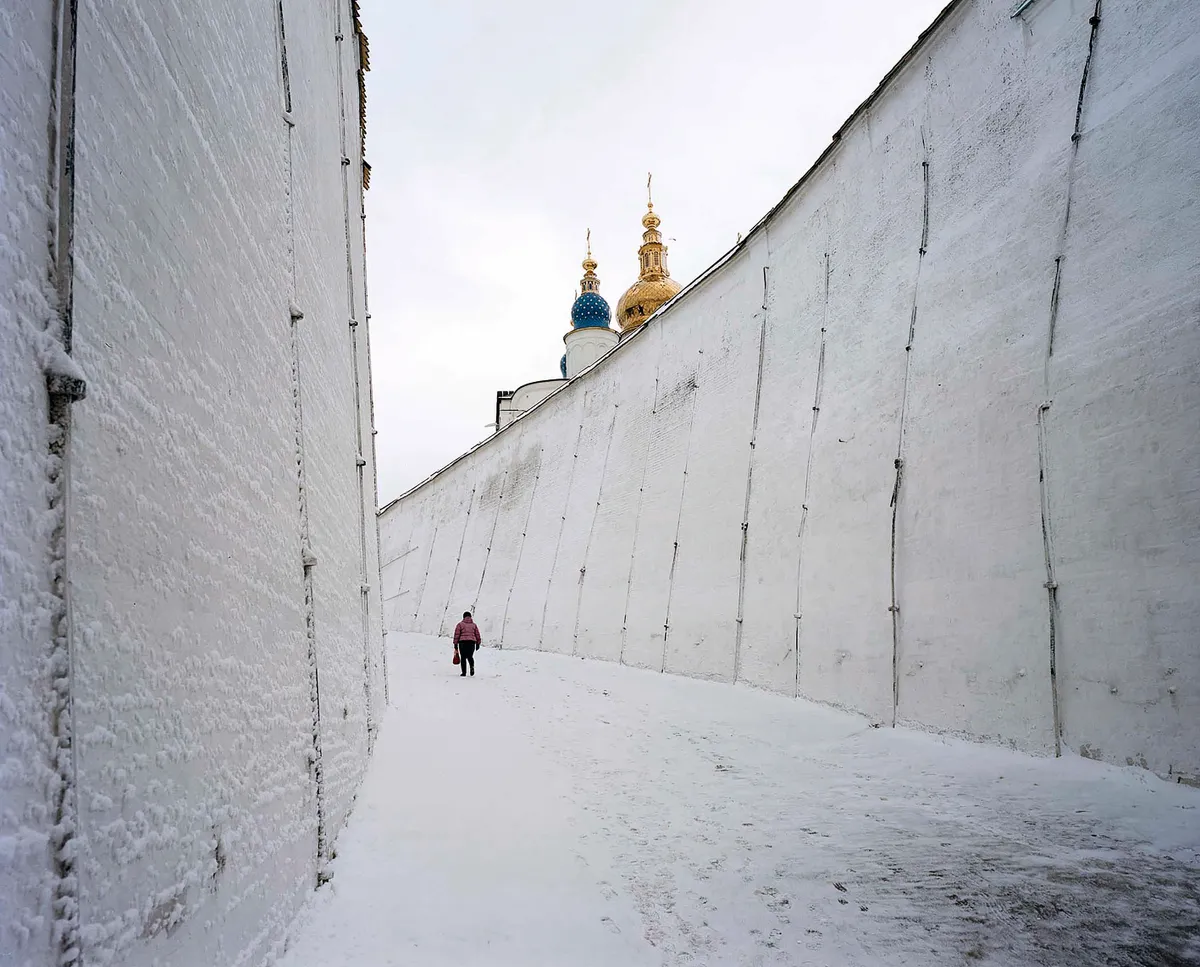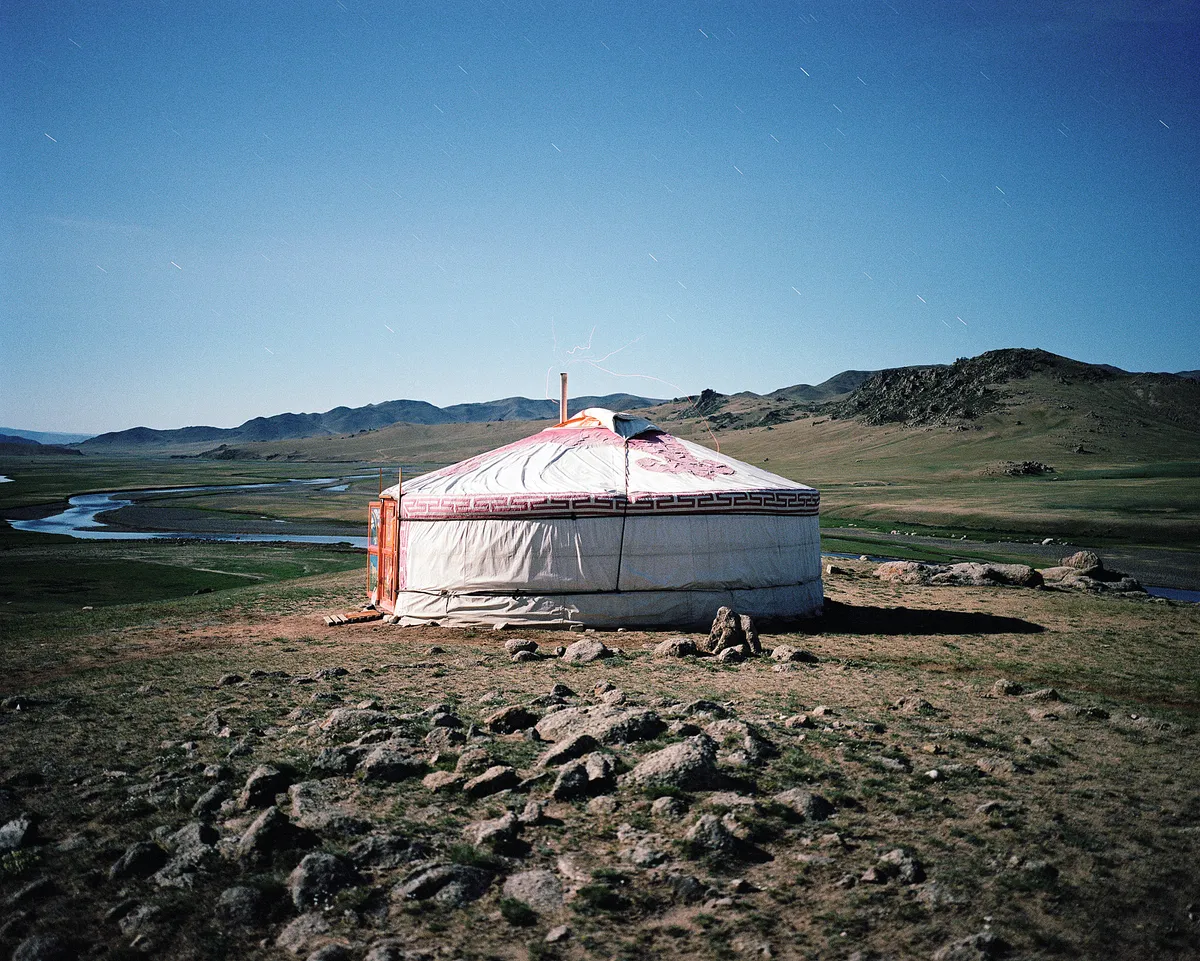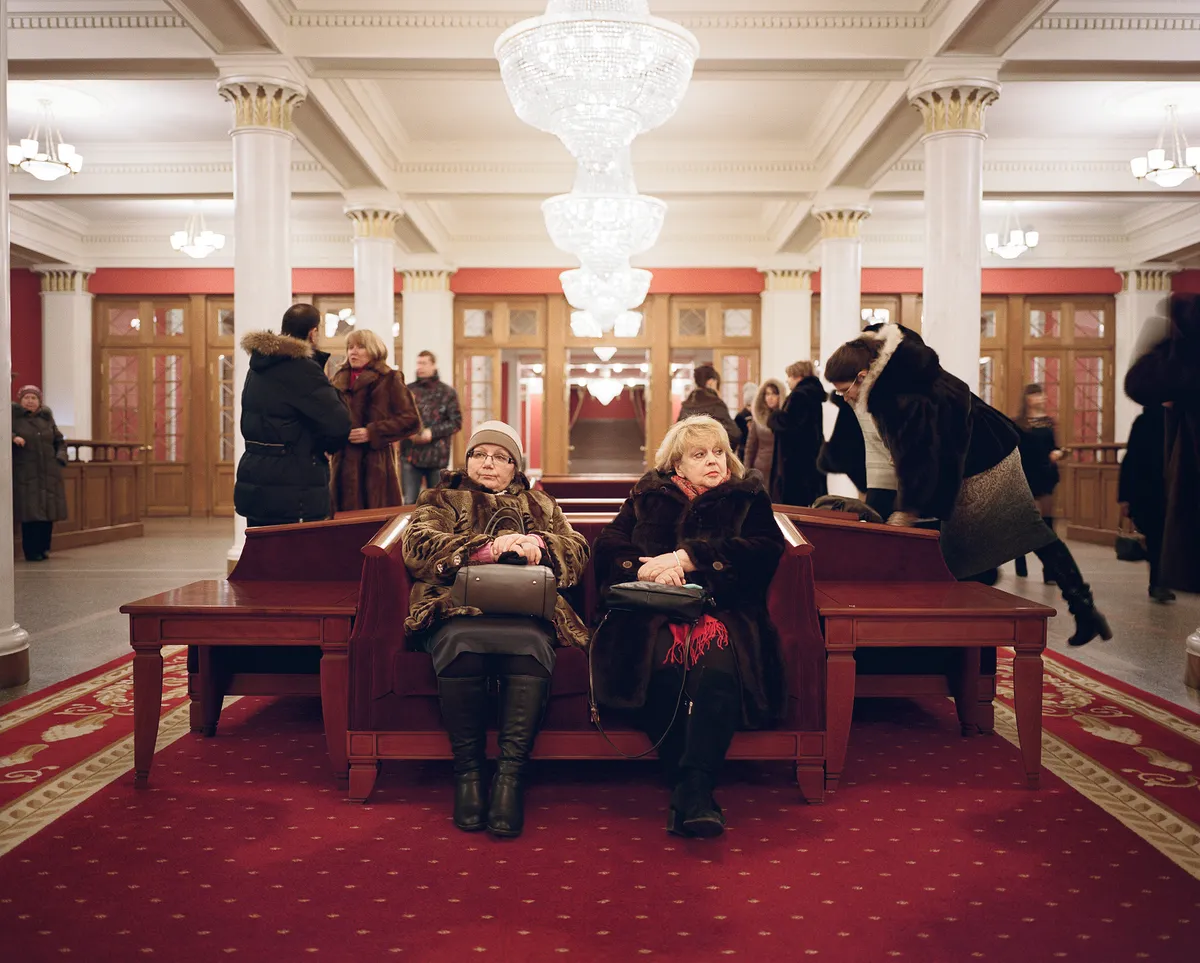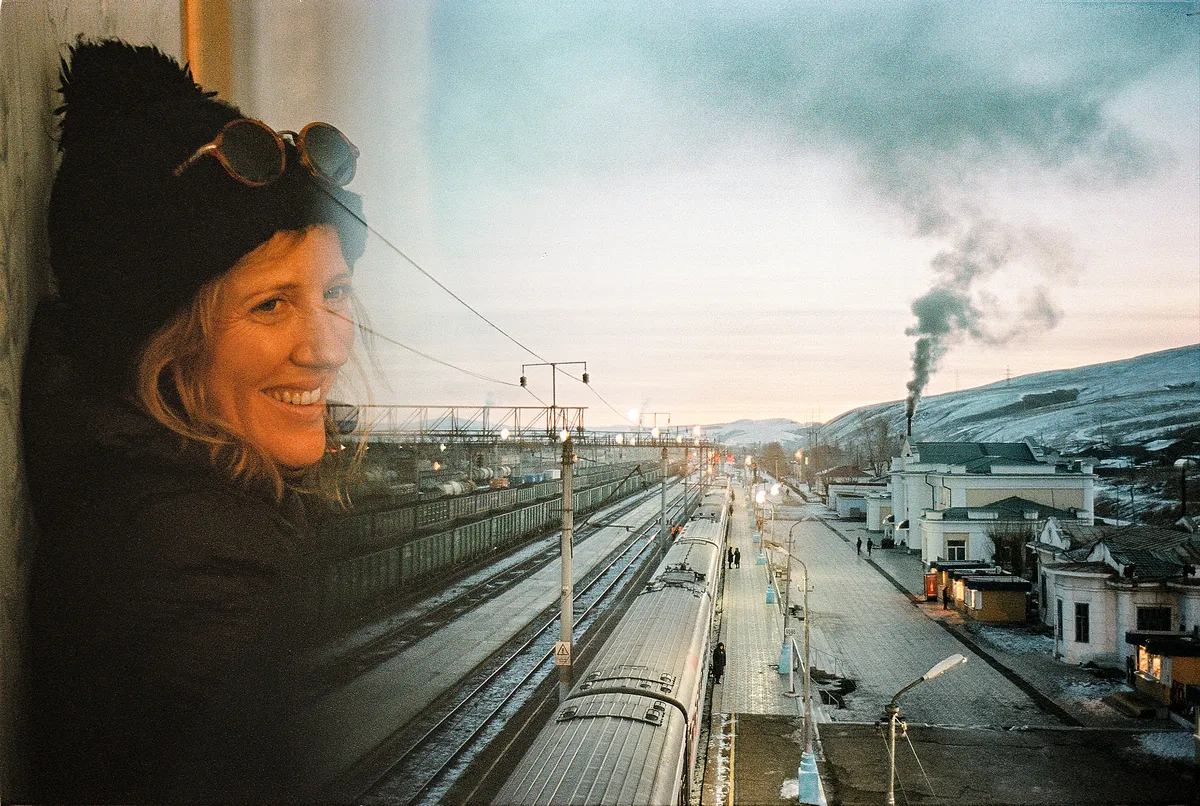In 2015, I spent a few happy weeks staying with friends in Mongolia’s Orkhon Valley near Karakorum, the site of the historic capital of Genghis Khan’s colossal former empire, not far from the border with Siberia. My friends – a German filmmaker, Christopher Giercke, his Mongolian wife, Enke, and their three children – live in the valley during the warmer months in a tented camp on the fenceless steppe. The landscape is empty, but by no means barren. In the velvet folds of the grasslands, you become totally present. You can hear every sound: the yaks grazing, the river running, the crackle of thousands of insects in the dry summer grass.
My family and I were not the only guests that year. Our friends also had a musician staying, a Mongolian pianist called Odgerel Sampilnorov. She had worked as a music teacher to Giercke’s children and others in the local community. Recognising her talent, Giercke had helped Sampilnorov secure nine years of study at a conservatory in Perugia in Italy. She was now one of Mongolia’s foremost pianists, whose talent I witnessed in the evenings when she would settle herself before the battered Yamaha baby grand in the felted ger, and play. It was magical to watch this intimate gathering – including a local shaman, champion archer and herder children – fall silent as they listened to Busoni’s transcription of Bach’s Chaconne floating up with the woodsmoke through an opening in the roof. But Giercke wasn’t satisfied: the instrument’s sound wasn’t what it should have been. During a recital one evening, he leaned over and whispered his frustration in my ear: ‘We must find her one of the lost pianos of Siberia!’
It was those words – and the poetic space they opened up – which unleashed a three-year book project in Russia. I became obsessed by the story of how pianos had ended up in Siberia, in a place less known for its music than its dark reputation as the world’s largest prison without a roof. From 1801 to 1917, more than a million subjects were banished to Siberia under the Tsarist exile system; from 1929 to 1953, an estimated 2,749,163 forced labourers died in the Soviet Gulag. But that horrifying past, shadowing every day I spent in Russia, was only part of Siberia’s history. Through my search for a piano, I also uncovered a profound connection between the instrument and this Russian hinterland, beginning when ‘pianomania’ took hold of St Petersburg and Moscow in the 19th century.
A story started to form as I traced European Russia’s fascination with the instrument. It seemed to me wonderful and absurd: the idea of dragging such an unwieldy instrument (and one so symbolic of the European bourgeoisie) into the snowy taiga where the indigenous people only traditionally carry what they can fit on the back of a sledge. In hunting down an instrument for my friend, I began to realise I’d be able to tell the history of the object in a place that held me in its thrall as I ventured from the Ural Mountains all the way to the Pacific Ocean.

It was a daunting task, not least because of the scale (I went by Anton Chekhov’s description: his ‘Siberia’ of 1892 comprised a vast region covering an 11th of the world’s land surface, stretching from the Urals city of Ekaterinburg to ‘Goodness Knows Where’). The climate proved formidable, with my travels in winter sometimes taking me into temperatures tipping to 20 degrees below. In summer, I suffered an extreme allergic reaction to the mosquitoes unleashed in the thaw. But every time I might have worried that I was embarking on an act of madness, a story would emerge – a tale of solace, hidden under a piano’s lid. It was all so movingly human: the loves lost, the passions remembered, the Gulag prisoner who practised on a keyboard her fellow prisoners had carved into the side of her wooden bunk. I stumbled upon letters, custom inventories and fascinating archives kept by piano tuners.
I found stories in the individual serial numbers inscribed into an instrument – was the Steinway concert grand, serial number 45731, a survivor of the Siege of Leningrad? Was the pre-Revolution Mühlbach the instrument belonging to the French concert pianist who ended up in a Gulag? – as well as newspaper clippings, including a 19th-century advertisement for an upcoming visit of a piano tuner travelling all the way from Kiev. It was fascinating to me, that there was enough demand for him to bother braving the bumpy Great Siberian Trakt. His destination? A Siberian town of tea merchants on the border with Mongolia, over 3,000 miles from his home.
The more time I spent with my feet on the ground, the more I appreciated the role the piano held among the early wave of Russians headed east – all because of the Europeanising influence of Catherine the Great, who began a craze by ordering a piano anglais from Zumpe in London in 1774 (it survived the Second World War in the basement of Russia’s largest opera house, in the Siberian city of Novosibirsk). When Catherine’s daughter-in-law Maria Feodorovna then hired instrument makers from German-speaking lands to kickstart a Russian piano-making industry, the new workshops couldn’t make pianos fast enough. Tax subsidies helped generate demand. Meanwhile the rockstar virtuosos – Franz Liszt, Sigismond Thalberg, Adolf Henselt (the man with ‘the velvet paws’) – were making such a fashion of the instrument that one mid-century commentator remarked that if there were 100 apartments in a St Petersburg building, 93 would have a piano.

And the journeys they took! In 1818, the Governor of Kamchatka’s wife, Lyudmila Rikord, took delivery of a piano gifted by a Russian admiral, Vasily Golovnin, who transported the piano over eight months on a Russian man-o’-war from St Petersburg, through the Baltic and North Sea, south to Cape Horn in South America, then across the Pacific to Kamchatka. I learned about the 1825 Decembrist Uprising, and Maria Volkonsky, wife of one of the exiled dissidents, who dragged her clavichord to Siberia on a sleigh when she joined her husband in exile. There is a moving 1832 drawing by a fellow exiled Decembrist; it depicts Maria playing the piano in a narrow prison cell, with her husband looking on.
It wasn’t all a grand romance, however. I also had to face the darkness. Kolyma was one of the most feared Gulag zones in the Soviet Union. In 1944 when the US vice-president Henry Wallace visited Magadan, a Soviet convict town in Kolyma, he was taken to the Magadan State Music and Drama Theatre (constructed by prisoners) to watch a play performed by forced labourers. This was a common occurrence in the Soviet Gulag. Troupes were assembled by camp commanders, influenced by a strict ethos of spreading ‘appropriate’ Soviet culture. For some, the creativity was a release; for others, like survivor, Yelena Vladimirova, it was a ‘travesty of freedom’ performed by ‘people half-alive’.
I visited Magadan after finding a picture of a grand piano. In the faded black and white image, taken in the 1940s, the instrument sits centre-stage in the empty theatre. I learned about the famous Soviet tenor Vadim Kozin, who had performed in the venue while a prisoner. Before his incarceration in 1944, Kozin had toured the Soviet Union, his fame so great that mounted police kept fans at bay. He was arrested on several charges, including sodomy. Alexander Solzehnitsyn, author of one of the most unflinching records of the Gulag system, wrote about Kozin’s performance in Magadan; how he sang to rapturous applause, only to be denounced as a pederast. Kozin tried to hang himself after his first performance in Kolyma, but was taken down out of the noose. He remained in Kolyma after his release, living in a flat in Magadan, where I found his old Red October upright.
This accumulated history made me realise the value of the pianos that survive to this day – instruments that represent the deep wellspring of humanity that can keep hope alive in the darkest of circumstances. It is a history of elegance, fortitude and culture, of which modern Siberians are proud. Because wherever I ventured, from the Arctic to the shores of Lake Baikal, from modern oil and gas cities to the Pacific islands of the Kurils, I also discovered an enduring truth in the words of Thomas Preston, British consul to Western Siberia during the Russian Revolution of 1917. He described music as ‘a passport… particularly in Russia’. A hundred years after these words were written, my simple question, ‘have you a piano?’, functioned as a way to enter private homes and strike up conversation with strangers. With a shared passion, we could transcend our assumptions formed of political, cultural and socio-economic differences. I could enter people’s inner lives.

Whether or not I was successful in finding a piano for my friend in Mongolia is something perhaps best discovered in my book. What I will say is this: the journey changed me. It shifted my preconceptions and reminded me of the dangers of my ethnocentricity. The more I fell for Siberia – its spectacular landscapes, its nuanced history, the Russian soul – the more I began to question myself as a traveller and journalist. Who was I to think Siberia was the back of beyond?
As I write this piece from my English home, I’m transported back into one of the highlights of my travels: the Altai Mountains. It is a staggeringly beautiful region near Siberia’s border with Mongolia, with high-altitude plateaus and rich Scythian and Denisovan archaeology. In some ways, the Altai is the Alaska of Russia – a place where people go to live off-grid. It was where I met a former Aeroflot navigator, Leonid Kaloshin, who had retired to the village of Ust-Koksa, inspired by an art exhibition he’d visited in Moscow depicting the Altai as an earthly paradise. Kaloshin was an enthusiastic bibliophile who had gathered tens of thousands of books to create a community library. He also had a keen interest in music, inspired by a young boy in a nearby village, who Kaloshin had found trying to play a table painted with a keyboard. ‘When I saw how strongly he wanted to hear music, I went to Moscow and bought him an instrument,’ said Kaloshin. ‘Nothing special; it was one of four pianos an old man was selling off cheaply from his garage.’ When I visited, Kaloshin had distributed 41 pianos to families around the Altai and – despite lacking the money to stock up on firewood – was building a concert hall at the back of his house. He asked me if I would keep my eye out for a piano for him. ‘But this place is so remote,’ I replied, feeling the tables turn: Leonid was asking me to find him a piano, rather than the other way around. ‘The world is very remote,’ he said, his grey eyes alight; ‘we are at the centre.’
The Lost Pianos of Siberia is published by Black Swan.
Siberia, a collection of photographs by Michael Turek, is published by Damiani.

A guide to Russia’s piano makers
After the Russian royal family heard him ‘duel’ with Mozart in 1782, Clementi began exporting his English brand of pianos to Russia, advising his colleague John Field to ‘make hay while the sun shines’. By 1810, six Western entrepreneurs had set up piano workshops in Russia, including a St Petersburg factory founded by the Bavarian-born Jacob Becker. The ‘Steinway of Russia’ was so well regarded that Becker pianos travelled to the Paris World Fair of 1878.
As the century progressed, only a few foreign-made Broadwoods and Blüthners made it through Russia’s protective trade barriers. This helped the likes of Becker dominate the domestic market. The factory thrived until the 1917 Revolution when Becker’s factory became state property, and renamed as Red October with a shift towards inexpensive instruments made in their thousands.
After perestroika, the old art of piano-making fell away. By 2000, the industry had almost died completely. The Red October factory closed in 2004. In the same month I started work on my book, it was reported that the last of Russia’s piano factories had closed.
Top image credit: Michael Turek